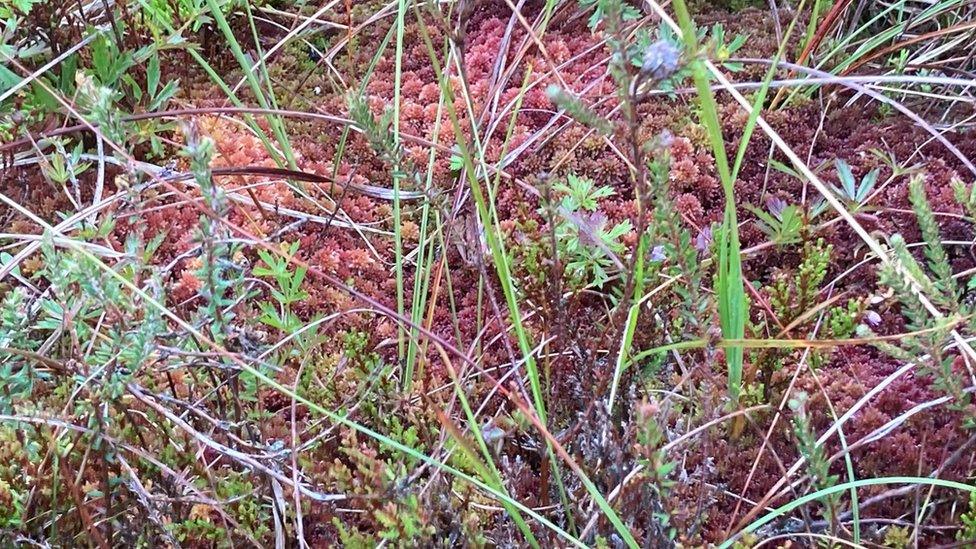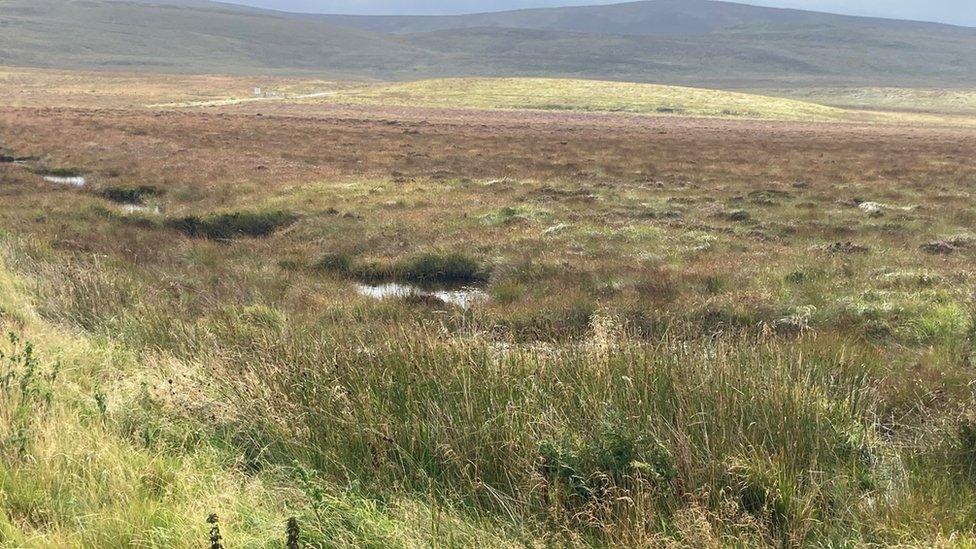Bog restoration project boosts Northern Ireland wildlife
- Published

Bogs are important "carbon sinks" that trap carbon out of the atmosphere and prevent it contributing to climate change
A five-year project to restore bogs in Northern Ireland has been branded a success as it comes to an end.
The Garron Plateau and Montiaghs Moss in County Antrim were selected for Co-operation Across Borders for Biodiversity (CABB), along with Pettigoe Plateau in County Fermanagh.
Bogs are important "carbon sinks" - sites that trap carbon out of the atmosphere and prevent it contributing to climate change.
Damaged bogs, as 86% of them are in Northern Ireland, release their stored carbon.
More than £4m from the EU's special programmes body helped install dams at the sites to block agricultural drains, allow the water table to rise and restore the bogs.
"When I first came here, this area was quite dry and you can see today there are now pools of water," said Joanne Sherwood, director of RSPB Northern Ireland.
"So that water is being held into the bog, the bog acts like a really big sponge.
"Now it has been restored it holds on to thousands and thousands of tonnes of carbon and it stops those emissions getting into the atmosphere."

Sphagnum moss is flourishing on Garron Plateau
Restoring the bog has also seen wildlife and plants returning to the sites.
"This is a really important habitat for species that are threatened, things like marsh saxifrage and hen harrier," Ms Sherwood added.
"And we're also seeing lots of wee bugs and beasties in these pools here, and that's great for the other species that live on those."

While the project has officially ended, the work to restore bogs across Northern Ireland will continue
Water from the bog filters down to the Dungonnell wastewater treatment works, before it goes to the taps in people's houses in the surrounding area.
Dymphna Gallagher, the head of drinking water regulation for NI Water, says it has made a huge difference.
"What we have here are drinking water supplies, a raw water supply that slowly moves through the blanket bog, keeps a nice level of wetness in the bog, and then that water goes down to the treatment works.
"When it goes down there it's treated more easily, at a lower cost and with lower amounts of energy because it's a nice consistent supply."
While the project has officially ended, the work to restore bogs across Northern Ireland will continue.
The project also supported work in Scotland and the Republic of Ireland.
Related topics
- Published7 September 2022

